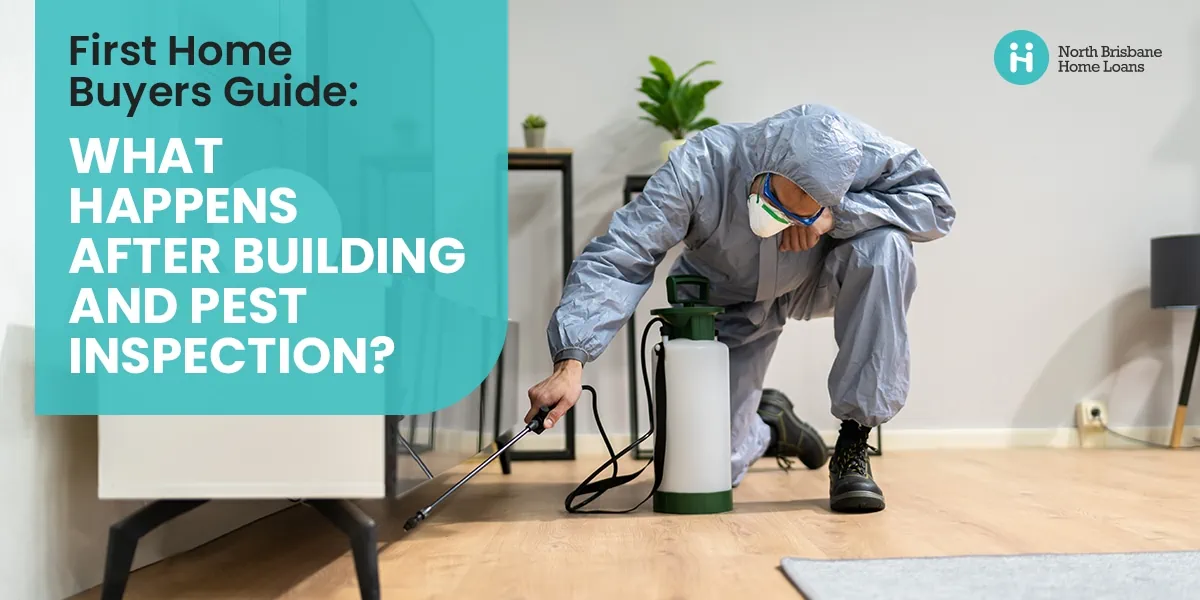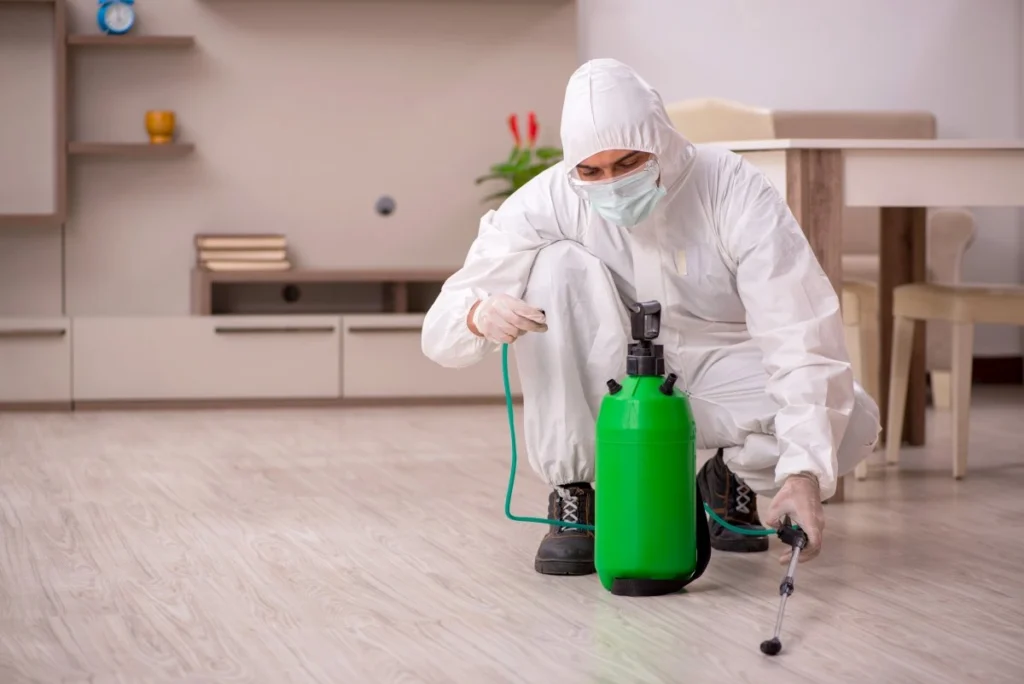Building and Pest Inspection: What’s Next?
First Home Buyers Guide: What Happens After Building and Pest Inspection? Are you planning on buying a home any time in the near future? Is it your first home purchase? If you answered yes to both questions, then you should know that a building and pest inspection is one step you need to take in such an endeavour. Now, this will bring about the question of “What happens after building and pest inspection?” and “Who pays for building and pest inspection QLD residents request before a home purchase?”
This article will answer these questions as well as give you useful information that can help you make an informed decision when it comes to purchasing your first home. But, before we answer the question of “what happens after building and pest inspection,” let’s first understand a few things about this process. Here are some important aspects for you to understand about building and pest inspection.
What is a Building and Pest Inspection?
A building and pest inspection is a crucial step in the home-buying process in Australia. It involves a thorough examination of a property by qualified professionals to identify any structural issues, damages, or pest infestations. This inspection ensures that the potential homebuyer is aware of any problems before finalising the purchase.
How long is a building and pest inspection valid for?
So, how long is a building and pest inspection valid for? Building and pest inspection reports aren’t valid indefinitely. The validity of such reports largely depends on the terms and conditions of the inspection company. However, it’s essential to note that circumstances can change after the inspection. For instance, a significant storm could cause damage to the property the day after an inspection, rendering the report outdated.
Similarly, a new termite infestation could occur right after the inspection. Therefore, while there isn’t a fixed validity period, it’s always recommended to act on the report’s findings as soon as possible.
How much does a building and pest inspection cost?
If you’re wondering “How much do building and pest inspections cost?” you’ll notice that the exact cost is seldom mentioned anywhere online. This is because costs can vary based on the size of the property, the location, and the inspection company. It’s advisable to contact local inspection companies directly or refer to specific sources to get an accurate estimate for your area.
The Importance of Being Well-Informed After an Inspection

Knowledge is power, especially when it comes to buying a home. Being well-informed post-inspection means you’re equipped with the necessary information to make a sound decision. It’s not just about identifying problems; it’s about understanding the potential costs, repairs, and implications of those issues.
Post-Inspection: Understanding the Report
Before you wonder what happens after a building and pest inspection, let’s examine what you will get in a detailed building and pest report. This document might contain some technical jargon, but don’t be daunted. Here are some examples of these terms:
- Structural Integrity: Refers to the strength and stability of a building.
- Subsidence: The sudden sinking or gradual downward settling of a building’s foundations.
- Dampness: The presence of unwanted moisture in the structure of a building, either the result of intrusion from outside or condensation from within.
- Efflorescence: White powdery substance on bricks or walls caused by salt deposits.
- Bearer: Horizontal beams that support the floor joists.
- Joist: Horizontal beams that support the flooring.
- Pier: Vertical support structure, usually made of brick or concrete, supporting bearers.
- Termite Barrier: A preventative measure, either physical or chemical, to deter termites from entering a property.
- Borer: Insects that bore into timber causing damage.
- Mould: Fungus that grows in damp areas.
- Asbestos: A heat-resistant fibrous silicate mineral that can cause health issues if inhaled.
- Rising Damp: Moisture rising from the ground into the walls due to a lack of or a failed damp-proof course.
- Underpinning: Strengthening and stabilising the foundation of an existing building.
- Flashings: Thin pieces of material, usually metal, used to prevent water from penetrating a junction.
- Sarking: A protective membrane placed under roofs.
- Settlement Cracks: Small cracks appear in walls due to the natural settlement of the building.
- Load-bearing Wall: A wall that supports the weight of the house.
- Non-load Bearing Wall: A wall that doesn’t support any structural weight of a building.
- Lintel: A horizontal support across a window or door opening.
- Fascia: A board that is fixed horizontally to the edge of the rafter ends.
- Soffit: The underside of any construction element, such as an arch or overhanging eaves.
- Treated Timber: Wood that has been treated with chemicals to improve its resistance to pests and decay.
- Ventilation: The provision of airflow to the sub-floor or roof space to prevent dampness and decay.
- Damp-proof Course (DPC): A barrier, usually made of slate, rigid plastic or bitumen, placed in walls to prevent rising dampness.
- Balustrade: A railing supported by balusters, especially an ornamental parapet on a balcony, bridge, or terrace.
It’s essential to go through the report thoroughly, and if there’s anything you don’t understand, don’t hesitate to ask the inspector for clarification. Remember, this report is a pivotal tool in your decision-making process about whether or not you proceed with the purchase of a property.
Detailed Breakdown of the Building and Pest Inspection Report
After receiving the inspection report, it’s also essential to take the time to understand it thoroughly. The report can be daunting but it holds vital information about the condition of the property.
Major vs. Minor Issues – Learn to differentiate between major structural problems, like foundation issues or significant pest infestations and minor cosmetic defects, such as chipped paint or loose door handles. Major issues will require immediate attention as they could affect safety and future costs.
Key Sections to Review – Focus on areas like the structural integrity, roof, plumbing, electrical systems and any pest-related damage. These sections will provide insights into the property’s long-term liveability.
Inspector’s Recommendations – Most reports come with expert recommendations on handling defects. These can include suggestions for repairs or further inspections. If any part of the report is unclear, consult the inspector to clarify what actions need to be taken.
Repair Planning and Prioritisation
Once you’ve reviewed the report, the next step is to plan for any necessary repairs. Not all defects need immediate fixing but some should be prioritised.
Categorising Repairs – Divide repairs into three categories:
- Urgent (must-do) repairs include issues that threaten the property’s safety, such as faulty wiring or severe pest damage.
- Necessary (should-do) repairs may include things that don’t pose an immediate threat but could worsen over time, like roof leaks.
- Cosmetic (nice-to-do) repairs involve items like repainting or fixing loose fixtures.
Budgeting for Repairs – Estimating the cost of repairs is crucial. Obtain quotes from multiple contractors to avoid unforeseen expenses. Always budget for more than the estimated costs to cover any surprises.
Repair Timeline – Develop a timeline for completing the repairs. Tackle urgent repairs first and allocate time for finding the right contractors. Staying organised will help ensure that the work is completed efficiently.
Seeking Professional Advice and Services
It’s highly recommended to consult professionals after receiving the inspection report. This is to ensure that all issues are handled correctly. You can ask your mortgage broker for recommendations too, if they have contacts within their network of trusted professionals.
Engaging Qualified Trades
Depending on the defects identified, you may need specialised trades, such as electricians, plumbers or pest control experts. Make sure to verify their credentials, insurance and licensing before hiring.
Getting Multiple Quotes
Obtain quotes from at least three professionals to compare costs and understand the scope of the work involved. This will help ensure that you’re getting a fair price for quality work.
Consulting with Experts
If you’re unsure about specific aspects of the inspection, like the severity of structural issues or pest damage, consider seeking a second opinion from another inspector or contractor. Their insights can help confirm the extent of the damage and the necessary actions.
Post-Inspection Actions: Repair, Renegotiate or Walk Away
Repair or Renegotiate
If significant issues are identified there are a few options. You can either request the seller to fix them before settlement or negotiate a price reduction to cover the repair costs. It’s essential to have professional repair quotes ready to strengthen your negotiation stance.
Contract Contingencies
When negotiating repairs or a price reduction, include contingencies in the contract. These clauses protect your interests, ensuring that agreed-upon repairs are completed before finalising the purchase.
Walking Away from the Deal
In cases where the cost of repairs is too high or the issues are too severe, it may be in your best interest to walk away from the purchase. Be sure to review the terms of your contract to ensure that you can legally terminate the agreement based on the inspection results.
NBHL and Asset Building and Pest Inspection Work Together
We asked Asset Building and Pest Inspection to share their expert advice on everything that first home buyers need to know about a building and pest inspection. This will cover the most frequently asked building and pest inspection questions when it happens during the purchase process, and tips for finding a qualified inspector who will help you with building and pest inspection in North Brisbane.
It’s just one of the ways North Brisbane Home Loans goes the extra mile to take the stress and hassle out of finding – and moving into – your dream home in Brisbane. Plus, if you’re a North Brisbane Home Loans client, you’ll get access to exclusive discounts from our partner network including any building and pest inspections conducted by Asset Building & Pest Inspections. Find out more about these offers here.
Building and Pest FAQs from First Home Buyers
Here are the most frequently asked questions we get from first home buyers, apart from the question of what happens after building and pest inspection:
Should I attend the inspection?
Yes, here at Asset Building and Pest Inspections, we recommend First Home Buyers attend. This way your inspector can show you issues at the property and you can have a more thorough conversation to help alleviate any concerns that we find and discuss problems you may have about the property.
Is the house okay?
Our comprehensive reports will provide a thorough assessment on the state of the property. It should be read in full and will help you to make an informed decision about whether you will proceed with the purchase.
What’s next after the Building inspection?
Either you are happy with the report and proceed with the contract, or if issues are raised, you may request the owner complete the repairs, or you renegotiate the purchase price after building inspection to cover the cost for repairs identified in the building and pest inspection report.
During the buying process, when does the building and pest inspection typically occur?
Typically, the building and pest inspection happen after you have submitted a written offer. Most prospective homeowners include a clause in the contract specifying that the sale will be conditional to a building and pest inspection. This then gives you an opportunity to not proceed with the purchase or renegotiate the price if issues are identified.
So, the building and pest inspection most commonly happens in the cooling-off period—usually between 7 and 14 days after a contract has been accepted—but it will depend on the time frame you negotiated in your purchase contract.
Once completed, Asset Building and Pest Inspection will promptly email your inspection report to you within 24 hours.
What potential issues should a First Home Buyer look for before putting in an offer?
Here are four things you should keep an eye out for while inspecting a property:
- Look at ceilings and behind bathrooms or kitchens for patches or water leaks.
- Look around the yard for draining issues or water ponding.
- Look in the meter box for past termite inspections.
- Check brickwork for cracking.
Who pays for a Building and Pest inspection?
To answer the earlier question of “Who pays for building and pest inspection QLD residents request before a home purchase?” note that the buyer covers the cost of the building and pest inspection – and you can choose any building and pest inspector you prefer.
How much does a building and pest inspection cost? The cost is very minimal in relation to the overall cost of the property but it gives you the advice to make an informed decision on the property you are purchasing.
We’ve seen many instances where home buyers have used the findings in their building and pest inspections to negotiate a better purchase price if there are areas of the property that need to be repaired or replaced.
Tips for finding a good Building and Pest Inspector in Brisbane?
Here are the questions to ask a potential building and pest inspector to determine if they’re the right fit for you:
- How much experience does the inspector have in the building industry?
- Is he licensed and insured?
- How many years has the inspector been completing building and pest inspections?
- Is the inspector the owner of the business, or a subcontractor?
- What type of report do you provide? Note: Tick and flick-type reports don’t offer much detail for the buyer.
Our inspector at Asset Building & Pest Inspections – Martin Slater has over 22 years of experience in the building industry. He is fully licensed and insured as a builder, building inspector, pest inspector and pool safety inspector based in Brisbane, Queensland.
He has been conducting pre-purchase and pre-sale building and pest Inspections for almost a decade. That’s over 6000 combined building and pest Inspections completed – the experience speaks for itself.
Martin is also the owner and director of the company and the inspector so if you engage Asset Building & Pest Inspections, it will be Martin completing the inspection. Their reports are detailed typed reports approximately 35 to 40 pages in length and include photos of major defects.
How can Asset Building and Pest Inspections Brisbane help First Home Buyers?
We go over and above to help first home buyers in Brisbane, Queensland. We know you may feel nervous about the purchase of your first home – and not exactly sure of the steps or avenues available to you to negotiate a purchase price. We take extra time to clarify any issues or concerns you have about the property – and the findings outlined in our inspection reports. We advise what areas may need immediate repairs and explain recommended maintenance plans for the property. No question is too trivial to ask.
Find out everything you need to know about purchasing a home for the first time, including ticking building and pest inspection off your list. Get in touch with the team at North Brisbane Home Loans by clicking on the button below. You can also connect with the Asset Building & Pest Inspections team on 07 3036 5555 or send them a message here to request a Building and Pest Inspection in Brisbane, Queensland.

Patrick Cranshaw, a Certified Mortgage Professional for over 21 years, founded North Brisbane Home Loans in 2002. His career began with ANZ Bank in New Zealand, where he progressed over 16 years to a Business Banking role in Virginia. After moving to Brisbane in 2000, Patrick led the QLD market for a home loan agency, helped set up the REMAX Real Estate Finance division, and practiced as a broker.









